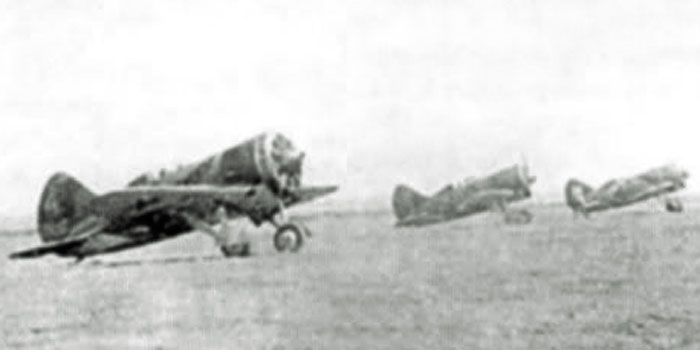
Photos of I-16 type 5 or 10 of 56 IAP that fought in Khalinin-Gol war against Japaneses, taken in July 1939. The planes show an anticipation of what became the standard black-green camouflage of 1941.
Again, the positoning of the red stars and bort numbers is typical of the prewar standard.
(from Voennaja Armada 2, 2001)
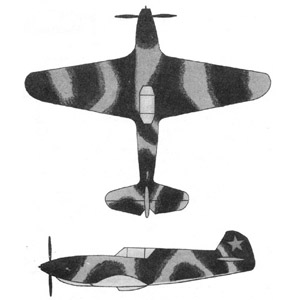 On
20 June 1941, the last day of peace, it was published an order of NKAP (the
Ministry for Aeronautical Industry) to paint all planes with a new standard
camouflage within one month.
On
20 June 1941, the last day of peace, it was published an order of NKAP (the
Ministry for Aeronautical Industry) to paint all planes with a new standard
camouflage within one month.
Already existing planes with uniform green uppersurfaces had to be added with matt black (A-26m oil paint for metal planes, and AMT-6 nitrocellulosic lacquer for mixed construction planes). Undersurfaces presumably preserved the original finish in A-18F or AII light blue.
For newly built planes, the instructions said to utilize matt light blue for undersurfaces (not specified what type of paint, but all previous light blue paintings were gloss, so they have to be A-28m for all-metal planes and AMT-7 for mixed construction planes).
Apart for some Yaks, the first known photos of planes with the new green/black painting scheme are dated to July 13, 1941.
Many maintenance manuals of the first years of war describe these paints: dope AMT-4 green, AMT-6 black and AMT-7 blue enamel or oil A-24m, A-26m and A-28m of the same colours. Oil colors were less utilized, also because AMT colors can adhere well to primed metal surfaces.
Despite their name (M= matt), AMT colors were semigloss when new, and turned to matt finish with ageing. Occasionally, they could have been overpainted with a layer of gloss varnish AB-4-d to improve aerodinamicity and gain some speed.
While AMT-4 and 6 were codified in July 1941, AMT-7 was codified in August 1941, and is not mentioned on earlier manuals; earlier AII light blue remained in use in parallel with the darker AMT-7 in the first years of war.
Oil enamels were intended to be sprayed on the exterior metal surfaces, even unprimed. Painting with a brush meant poor paint properties, and was allowed only as a second choice, ex. for repairs.
Prop blades were now fully painted black.
The order of June 1941 changed the national marks of planes too. Red stars, of plan tipe or with thin black outline, were now placed in four or six positions:
- one on each side of fuselage (not always),
- one on each side of rudder/stabilizer,
- one on the undersurface of each wing.
Note the deletion of stars over the wings, and the introduction of new ones on the tail.
Sometimes the stars were outlined with white, silver or yellow borders, but this wasn't a national standard; it could has been the factory mark of factory 18.
The release of a clear directive on camouflaging the planes with green and black bands, with light blue undersurfaces, reached the units contemporarily with the war outbreak, when the frontline units had other things to worry about.
The directive previded that the existing planes, already painted with a layer of green on uppersurfaces (both AII green, A-19f or earlier types of protective), had to be painted with black bands, eventually preserving the original green and the original color of undersurfaces.
Many Soviet planes still had light grey and/or aluminum liveries; theorically, they had to be repainted with green/black uppersurfaces, eventually leaving the original silver/grey color on undersurfaces.
The lack of time and of paint sometimes led to improvised camouflages, made by spraying or brushing green and, eventually, black strokes on the upper and side surfaces of silver/grey planes; these were not intended as experimental camouflages or due to artistic inventive of some technicians, but as improvisations intended to spare paint and time. This use was not exclusive of the first days of war; already in July 1939, SB and I-153s employed in the Khalinin-Gol conflict against Japaneses were camouflaged with green serpentines over the silver/grey original finish.
Probably, these camouflages were made utilizing existing stocks of pre-war paints, even if it could be that, in some cases, they could have employed newer AMT or A-xx m paints.
The red stars on the upper face of wings were usually obliterated with camo colors, and new stars were added on the sides of the tail in addition to those on the fuselage.
Note that many I-16s were not repainted and mantained the prewar livery even much after the war's outbreak.
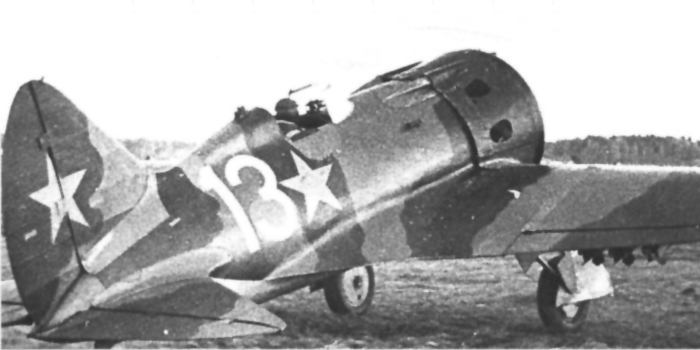
 Many
examples of I-16s with disruptive camouflage are known. Probably it was obtained
by overpainting with black the previously uniform AII green uppersurfaces.
Many
examples of I-16s with disruptive camouflage are known. Probably it was obtained
by overpainting with black the previously uniform AII green uppersurfaces.
The scheme of such bands seems to have some resemblance to the NKAP 1941 template, simplified (noticeably with the deletion on half-ball on the rear fuselage) to match the shorter fuselage.
This rocked-armed I-16, possibly type 29, is of / IAP on the Leningrad front; the photo dates back to the fall 1941.
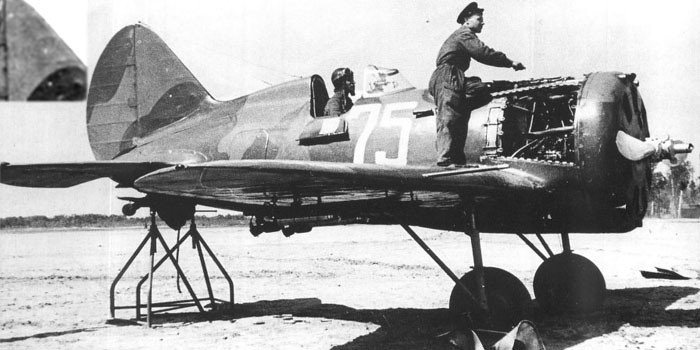
The plane of sgt.V.P. Segalayev of the 71 IAP of the Baltic Fleet.
The plane is of type 29, the last variant dedicated for ground attack. It was characterized by four underwing rocket rails, a 12.7 mm UBS in the lower part of fuselage, by the oil cooler moved on the right side, and by a slightly modified landing gear (moved slightly outside and shorter) to make room to the UBS between the wells; the prop blades wee slightly shortened too.
Again, the camouflage looks very similar to the NKAP template.
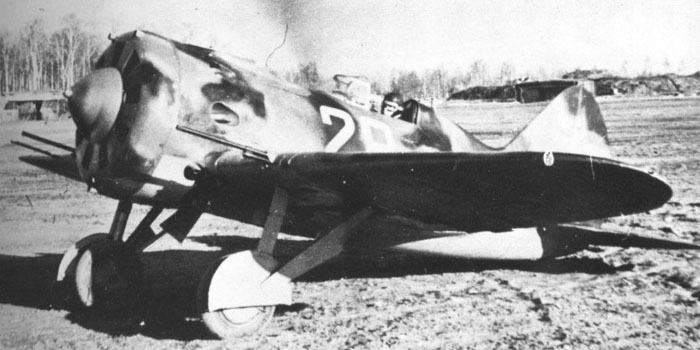
White 28, the plane of snr.lt. J. Vasilev, a squadron commander of the 4 GvIAP of the Red Banner Baltic Fleet in Spring 1942.
The plane is type 17, similar to type 10 but recognizable for the large 20 mm ShWAK guns protruding from the wings.
This plane looks painted with an unusual camouflage; thin lighter bands are interposed between green and black ones. Someone interpreted them as remains of a winter scheme, but they could also be of some light camo color, as some light brown.
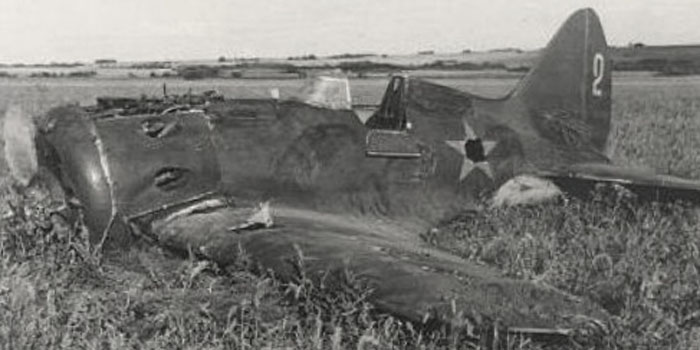
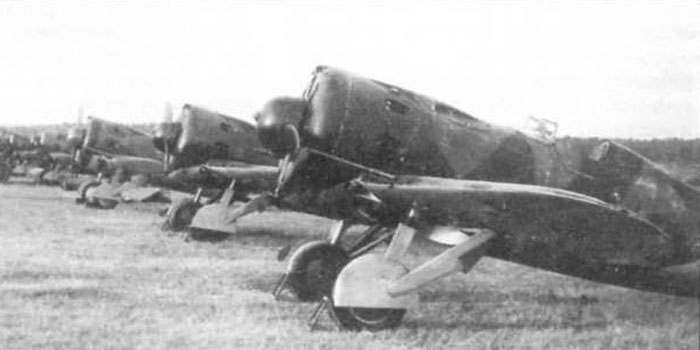
The first planes is of type 28, similar to 24 but recognizable for the large 20 mm ShVAK guns on the wings.
The second one, without guns, could be a type 18 (not a 24 because of its slightly different landing gear).
The third one, with guns, could be a type 27 (similar to type 18 with guns)
They exhibit fashinating black bands on a green blackground.
The first plane, in particular, looks an angular interpretation of the 1941 template.
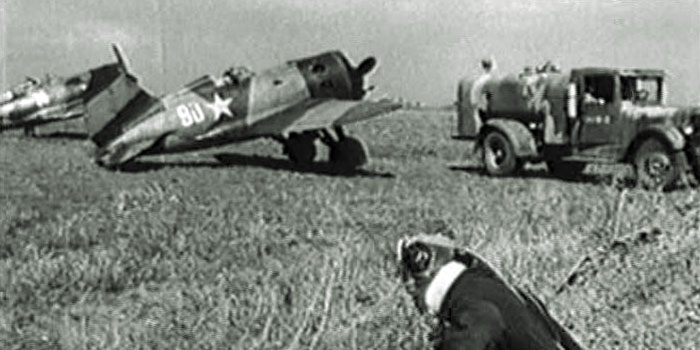
I-16s with angular camouflage of the Moscow PVO from a movie of 1943. Again, the angular camo has a pattern resembling the template of 1941.
http://scalemodels.ru/modules/forum/viewtopic_t_6048_start_320.html
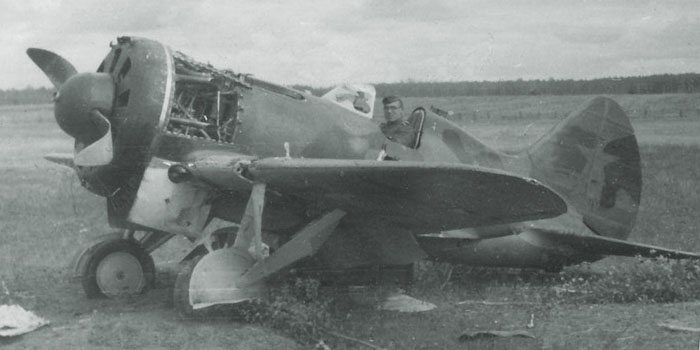
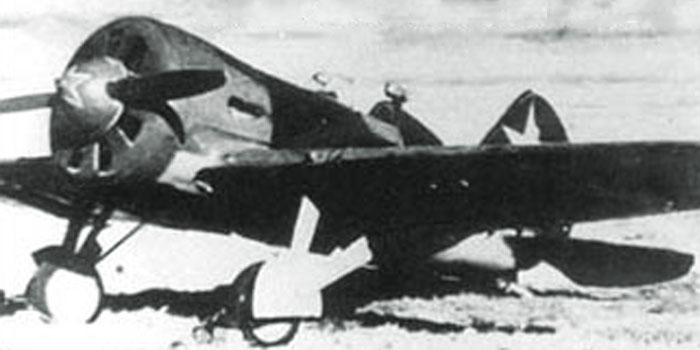
Another unusual post-1941 pattern on an I-16 type 5, recognizable for the sharp spinner, the absence of gun fairings and barrels over the nose and of the oil cooler and carburettor intake on the front.
Note the red star on the spinner and the camera gun behind the cockpit.
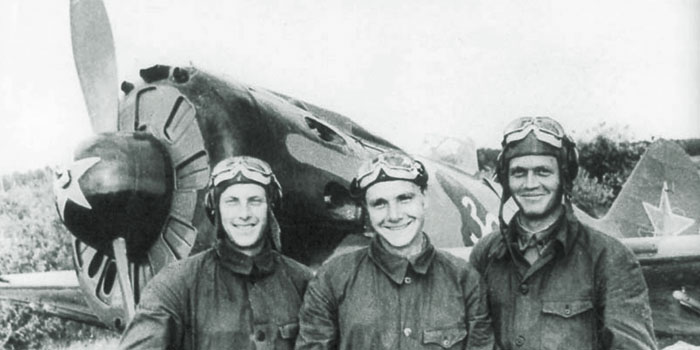
An I-16 type 29 with unusual pattern and a slogan 'za ????'.
According to some author, the stabilizer is blue, but the difference of shade between it and the lighter plate at its root could be due to different ageing of green color on metal and fabric parts.
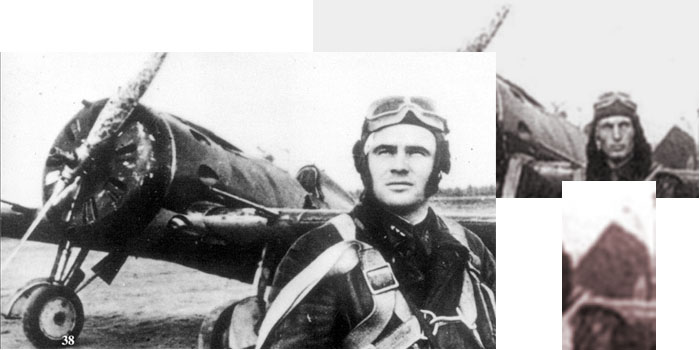
The I-16 type 17 of Grigoriy Sergeyevich Zhuikov, commander of a squadron of the 191 IAP that defended Leningrad on September 1941. He obtained 7 victories flying on I-16s.
The plane is often represented in profiles as having a red 8 outlined in white on its tail, but what I see enlarging one of the photos seems compatible only with a red 1 with white outline. Note the white tail tip.
The plane seems to have the standard prewar finish in AII green (probably with light grey/silver undersurfaces) altered with some black: the cowling seems to have some accurately painted ovals between the exhaust tubes recesses, but what we see on the sides of the fuselage are black brush strokes hurrily put on. It's impossible to say if the rear fuselage, wings and tails were altered in the same way. The propeller, originarily unpainted, looks dotted with green and black small dots made by brush, not traces of wearing.
Difficult to say if the small white dots on the nose are traces of aluminium visible through chipping or what else; maybe the ground crew could have dotted the prop with a light color too to cover metallic reflections, and made dots on the nose for mistake.
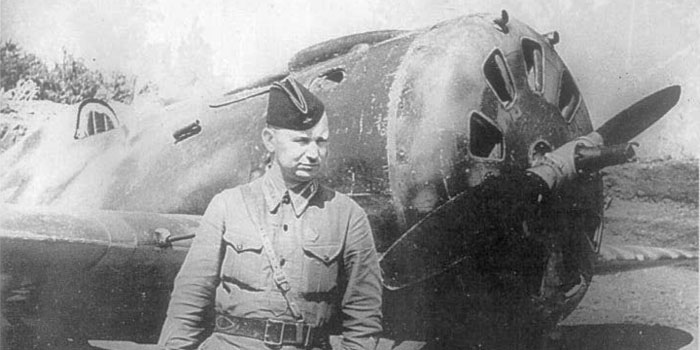
Surprising improvised camouflage on a type 10 without spinner and probably without the landing gear doors. The plane looks oversprayed with at least a lighter color. Note the zebra effect on the left leading edge.
The photo is probably taken in summer/fall 1941. Note the prop blades, painted in black on their front too.
From Istrebitel I-16 of M.Maslov
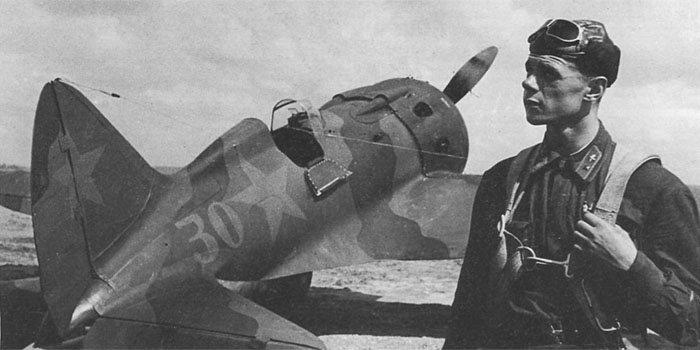
I-16 type 24 of 286th IAP, flown by pilot Lt. Ivan K. Bratushki on the Leningrad front, Ladoga Area, in Summer 1942.
Noteworthy are the wire aerials going from the stabilizator to the right side of the fuselage and to the right wing.
Note the 30 of the same color of the stars, ie red.
According to Vaklamov and Orlov, the green is the 4BO usually utilized for military vehicles. The camouflage pattern doesn't resemble much to the NKAP template of 1941.
From M-hobby 2/99
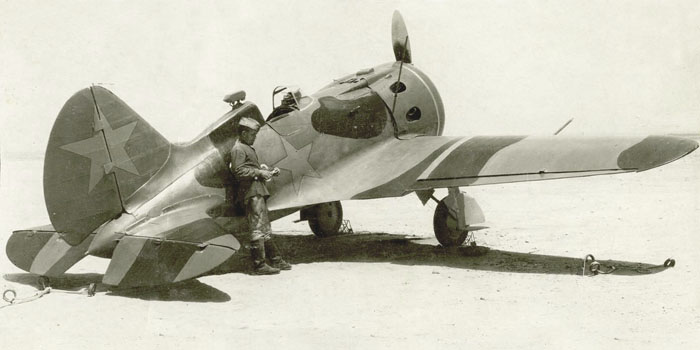
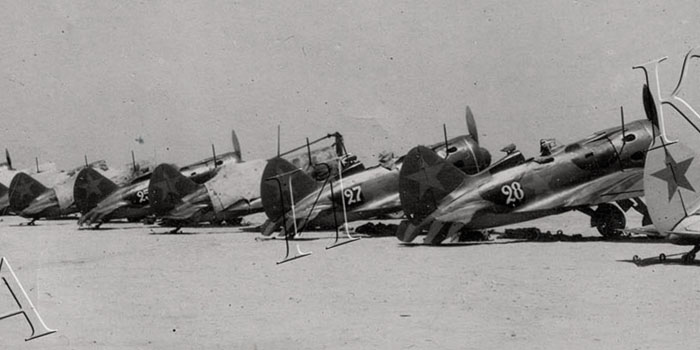
An I-16 in 1943. It appears brush-painted with usual AMT-4 and 6 with an unusual pattern.
Below: detail of a whole line of I-16 identically camouflaged. N.25, 27 and 20 are recognizable, and it's likely that all the previous numbers are represented although not visible.
The silver plane in first position is an UTI-4.
Images: Zaika
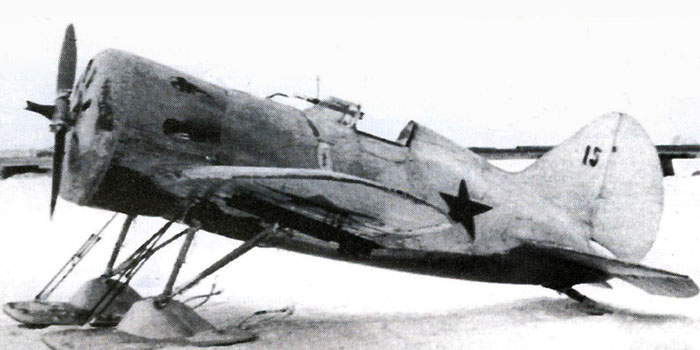

I-16 type 5 with winter painting, unretractable skis and rockets, examined by Finnish technicians. The rough finish of the brush-painted MK-7 distemper is evident.

I-16 'red 64' captured by Finns on the Lake Ladoga on December 10, 1941. The plane was later coded IR-104 by the Finns that tried to restore it.
The winter white paint hides all the uppersurfaces, while the undersurfaces are painted with non-uniform color of difficult interpretation; nose and wings could be painted with AII light grey or light blue, while the fuselage and tail could be painted with AMT-7 to cover the previous silver finish, still visible on the peeled off elevator.

Plane n.31 belly landed and photographed by Finnish soldiers.
The plane is clearly camouflaged (the shadows of the men don't justify the blotches) and has a black nose. Note the red star on the tail only.
It's unclear if the white blotches are traces of snow or a winter temporary camo.
The plane looks similar o n.91 shown below.

I-16 n.91 seems a type 10; its camouflage looks to have much in common with n.31. It's unclear if the white over the wings is a winter camouflage or some trace of snow.
Note the rockets and the absence of landing gear doors. Many obsolete planes were adapted as ground assault planes.

I-16 of the 4t GvIAP of the Baltic Fleet in winter 1942. The nose of the first plane, red 34, is covered.
Note the six rocket rails on the first plane.
(From Istrebitel I-16 of Maslov)
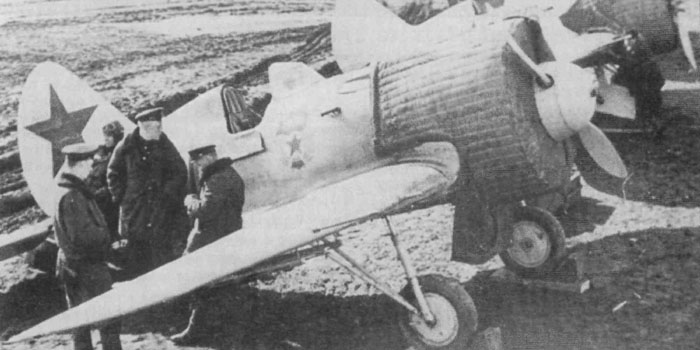
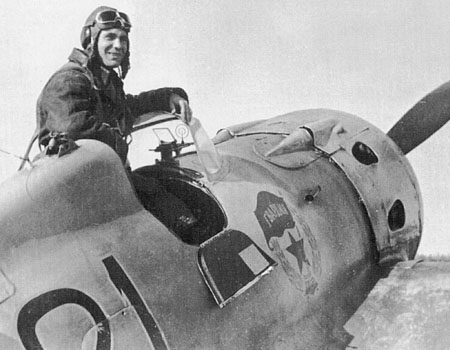 Two images
of the plane type 24 of lt. G. Tsokolayev of 13 IAP VVS-KBF, made Guards
as 4 GvIAP VVS-KBF on January 18, 1942.
Two images
of the plane type 24 of lt. G. Tsokolayev of 13 IAP VVS-KBF, made Guards
as 4 GvIAP VVS-KBF on January 18, 1942.
Note the guards emblem, the red star apparently on the tail only, the Guards emblem, the apparently white prop blades, and 3 rockets under each wing.
The winter paint looks extended on the undersurfaces too.
(From I-16 in action, Squadron Signal,
and Black Cross, Red Stars n.2)


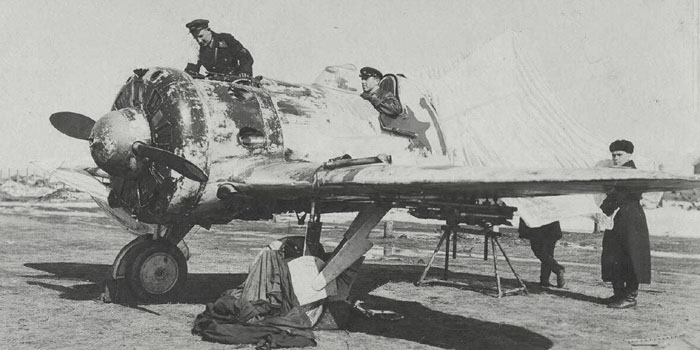
I-16 type 29 'red 1?' on maintenance, probably on spring 1942. A layer of rough MK-7 washable white paint, now well worn, was put to mask the plane on the snowy ground. Note the small red star just behind the cockpit door.
Under the winter camo, the plane seems to have preserved an AII green livery. The spinner is lighter than the nose, possibly red.

Plane white 12 on Mozdok airport, nortern Caucasus, 1943. The lack of machine guns over the nose identifies it as a type 5. Remaining I-16s are utilized for ground attack with rockets, and often have their spinners and landing gear doors removed. Probably a metal protection plate was installed to protect the skin from the fire of the rockets, as on type 29.
(From Istrebitel I-16 of Maslov)

 Another
plane of the same unit, even more faded and apparently without number. Again,
the lack of machine guns over the nose identifies it as a type 5.
Another
plane of the same unit, even more faded and apparently without number. Again,
the lack of machine guns over the nose identifies it as a type 5.
Besides the rocket rails, it has some unidentified device mounted under the wings, perhaps FAB-50TR or AO-25M2 bombs.
(From Istrebitel I-16 of Maslov)
Right: detail of another plane of the same unit with the same load under the wing.